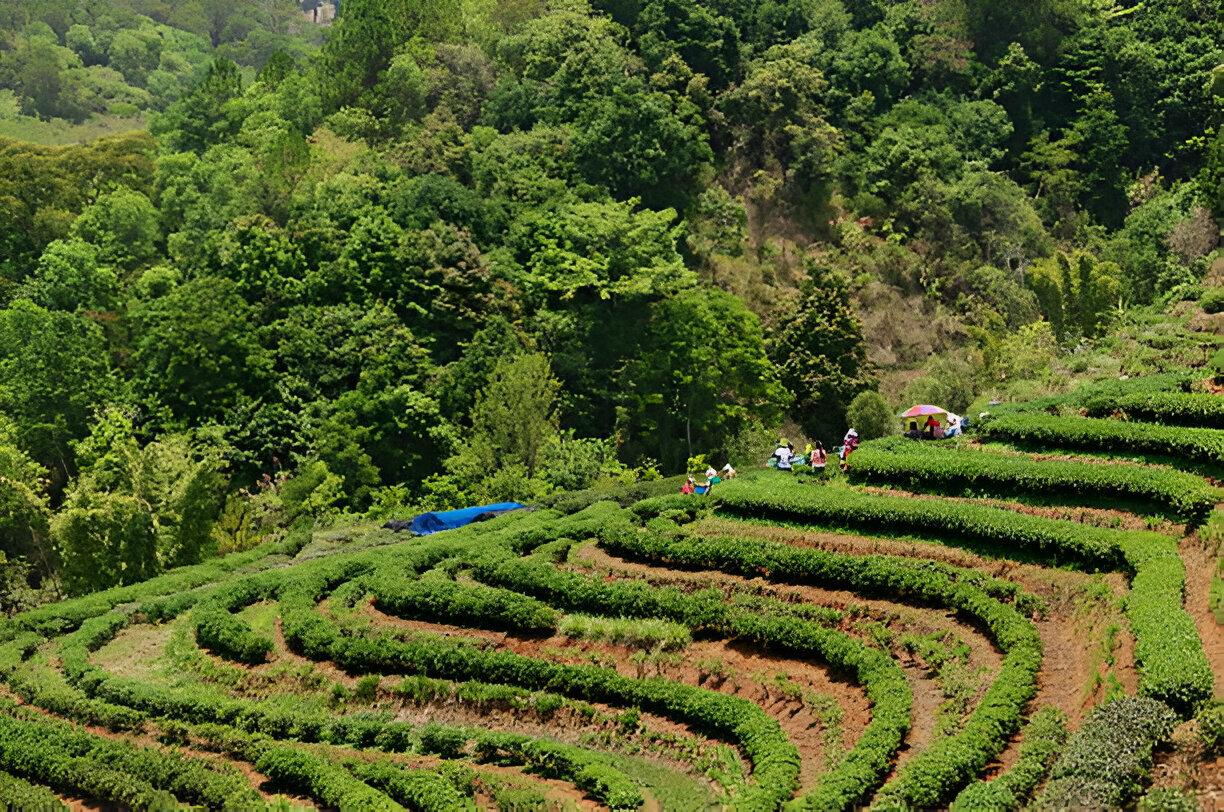As climate change intensifies, conventional agriculture faces increasing pressure. Integrating trees into farmland through agroforestry offers a transformative, nature-based path forward, turning agriculture into a powerful climate solution.
It’s an approach that integrates trees and shrubs into a crop and livestock system. This method not only restores ecosystems but also supports farmers in adapting to environmental stresses, positioning it as a vital strategy for climate mitigation and adaptation.
Other Article: Balancing Biodiversity and Livelihood: The Future of Agroforestry in Indonesia
Table of Contents
ToggleIts Role in Climate Mitigation
Harmoniously planting trees and shrubs offers a promising future for sustainable farming and is a powerful approach to mitigating climate change. Below are three key climate benefits.
1. Carbon Sequestration
Trees planted when practicing agroforestry systems act as carbon sinks by capturing CO₂ through tree biomass and soil organic matter. As trees and other plants absorb carbon dioxide from the atmosphere, it reduces the GHG emissions.
2. Biodiversity Enhancement
Unlike monocultures, agroforestry systems maintain structural complexity and a variety of species, offering critical habitats for flora and fauna. These biodiversity gains contribute to ecosystem stability and resilience under climate stress.
3. Soil and Water Conservation
Tree roots stabilize soil, reduce erosion by holding the soil intact, and enhance water infiltration. Thus, these systems improve soil health and microclimates, which help maintain productivity during droughts.
Socio-Economic Benefits for Communities
The agroforestry system also preserves benefits for the socio-economic sector for community well-being.
1. Livelihood Diversification
Agriculture combined with the forestry approach allows farmers to diversify income through timber, fruits, spices, or medicinal plants, reducing reliance on a single crop. This flexibility buffers rural communities from price shocks and crop failure, allowing year round income as well.
2. Food Security
Trees interplanted with crops contribute to year-round food sources while improving soil fertility and moisture retention. These factors are critical for food resilience in changing climates.
3. Community Empowerment
Community-led agroforestry initiatives, especially those involving traditional ecological knowledge, have empowered rural groups to manage resources sustainably and equitably.
Agroforestry in Practice: Indonesian Case Studies
This approach is not a new agriculture method. It’s been practiced by indigenous communities across the globe. In Indonesia, a notable case is from Batutegi Protection Forest, Lampung.
Batutegi is actually a protected forest which was converted to farms and gravely suffers biodiversity loss and increased GHG emissions. To combat this, Batutegi farmers adopted agrisilviculture, a specific agriculture and forestry type that blends crops like coffee, pepper, and rubber with forest trees.
It successfully increased carbon stock beyond national averages for coffee agroforestry, demonstrating its environmental benefit.
While biodiversity needs improvement, this method offers a viable path to sustain livelihoods while protecting vital forest ecosystems, showcasing how thoughtful land management can turn a problem into a solution.
Scaling Agroforestry’s Climate Impact
The following aspects are necessary to scale its impact in combating climate issues.
1. Policy Integration & Finance
Integrate agroforestry into National Climate Strategies (NDCs). Bolster this with robust financial mechanisms, overcoming initial costs and empowering farmer adoption through partnerships.
2. Farmer Empowerment & Knowledge
Empower farmers with essential knowledge, capacity, and cost-sharing or co-financing for effective implementation.
3. Technology for MRV
Leverage technology for precise monitoring, reporting, and verification (MRV). It’s crucial for accurately quantifying climate contributions like carbon sequestration and ecosystem health.
4. Data-Driven Impact
A data-driven through systematic tree monitoring approach ensures transparent, long-term impact verification, securing agroforestry’s role as a measurable climate solution
Agroforestry for Sustainability
Agroforestry stands as a powerful nature-based solution, delivering vital environmental and socio-economic benefits. For businesses committed to restoring ecosystems and achieving climate targets, embracing this approach is strategic. Explore how Satuplatform’s end-to-end solutions can empower your journey. Get a FREE DEMO to step into a more sustainable future!
Similar Article
Bagaimana Peran Perang dan Militer sebagai Kontributor Jejak Karbon Global
Konflik dan perang menciptakan kontributor jejak karbon baru dengan dampak signifikan dan sayangnya, sebagian besar tidak dihitung. Emisi ini jarang…
Why Product Lifespan Is the Next Frontier for Sustainable Business
Embracing product longevity and extending product lifespan emerges as a current and indispensable strategic priority for cultivating sustainable business growth…
Green Building sebagai Cara Mengurangi Jejak Karbon, Ini yang Perlu Dilakukan!
Di tengah isu perubahan iklim yang semakin mendesak, bisnis dan masyarakat global mulai sadar pentingnya pembangunan yang lebih ramah lingkungan.…
Unveiling the Environmental Impact of Children’s Toys Industry
The global toy industry plays a significant role in early childhood development, creativity, and education. Toys bring joy, imagination, and…
ESG as Sustainability Initiatives for Modern Industry
In today’s world, sustainability is no longer just a “nice-to-have”, but it’s a must. With rising concerns about climate change,…
ESG Strategies for Business Growth in Developing Countries
In today’s fast-changing world, businesses are no longer only measured by profits. Companies are now expected to be responsible for…








